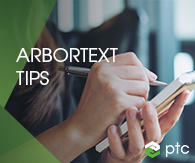Community Tip - Did you get an answer that solved your problem? Please mark it as an Accepted Solution so others with the same problem can find the answer easily. X
- Subscribe to RSS Feed
- Mark Topic as New
- Mark Topic as Read
- Float this Topic for Current User
- Bookmark
- Subscribe
- Mute
- Printer Friendly Page
What type of hardware and software required to support the Publishing Engine for Arbortext Editor 7.0?
- Mark as New
- Bookmark
- Subscribe
- Mute
- Subscribe to RSS Feed
- Permalink
- Notify Moderator
What type of hardware and software required to support the Publishing Engine for Arbortext Editor 7.0?
My company is preparing to install the Publishing Engine that came with our installation disk for Arbortext Editor 7.0.
What type of hardware (i.e. Internal Network) and software to interface with the hardware is required to support the Publishing Engine?
Even though PTC provided me documentation for the Publishing Engine, it did not detail what my company requires to support the Publishing Engine.
Thank you,
Mike
Solved! Go to Solution.
Accepted Solutions
- Mark as New
- Bookmark
- Subscribe
- Mute
- Subscribe to RSS Feed
- Permalink
- Notify Moderator
It is unclear from your question what extra detail is required. I'll try and explain the common scenarios we encounter for Publishing Engine installation.
PE works on Windows only (compatible and supported versions of Windows are specified in the "software matrix" documentation from PTC). You should install the 64-bit edition of PE on top of Windows 64-bit. You can use either a physical or virtual machine, but should be networked via ethernet (preferably gigabit). For heavy duty workloads we recommend to use physical machines instead of virtual.
The specifications of the machine and its network are dependent upon the anticipated application workload. A basic "test" environment configuration may consist of dual cores and 8GB RAM. A regular production environment may consist of quad cores and 16GB RAM, whereas a heavy duty server would have 8 cores and 32GB RAM or more. You must configure the number of PE "subprocesses" (workers) to match the number of CPU cores less one (so the operating system can use it). PE will also use scratch space (temporary files) on the local hard disk so you want reasonably specced drives and interface on the machine. You should probably do some performance and load testing to ensure your specification meets required performance parameters.
In terms of software, PE ships with its own version of Tomcat and JRE. It has no other dependencies on databases or anything else. Tomcat serves up PE via servlets so you can configure the TCP/IP port numbers and so on through Tomcat.
You may implement or cluster multiple PE servers by putting a load balancer in front of them, whatever you would normally do for a servlet application environment. Same applies to your Disaster Recovery options. PTC does not provide their own tools for load balancing, disaster recovery, monitoring, backup, etc.
Does this answer your question?
- Mark as New
- Bookmark
- Subscribe
- Mute
- Subscribe to RSS Feed
- Permalink
- Notify Moderator
It is unclear from your question what extra detail is required. I'll try and explain the common scenarios we encounter for Publishing Engine installation.
PE works on Windows only (compatible and supported versions of Windows are specified in the "software matrix" documentation from PTC). You should install the 64-bit edition of PE on top of Windows 64-bit. You can use either a physical or virtual machine, but should be networked via ethernet (preferably gigabit). For heavy duty workloads we recommend to use physical machines instead of virtual.
The specifications of the machine and its network are dependent upon the anticipated application workload. A basic "test" environment configuration may consist of dual cores and 8GB RAM. A regular production environment may consist of quad cores and 16GB RAM, whereas a heavy duty server would have 8 cores and 32GB RAM or more. You must configure the number of PE "subprocesses" (workers) to match the number of CPU cores less one (so the operating system can use it). PE will also use scratch space (temporary files) on the local hard disk so you want reasonably specced drives and interface on the machine. You should probably do some performance and load testing to ensure your specification meets required performance parameters.
In terms of software, PE ships with its own version of Tomcat and JRE. It has no other dependencies on databases or anything else. Tomcat serves up PE via servlets so you can configure the TCP/IP port numbers and so on through Tomcat.
You may implement or cluster multiple PE servers by putting a load balancer in front of them, whatever you would normally do for a servlet application environment. Same applies to your Disaster Recovery options. PTC does not provide their own tools for load balancing, disaster recovery, monitoring, backup, etc.
Does this answer your question?
- Mark as New
- Bookmark
- Subscribe
- Mute
- Subscribe to RSS Feed
- Permalink
- Notify Moderator
HI Gareth,
Thanks for your response. We decided to purchase a PowerEdge T430 Tower Server operating at 1.9 GHz, 1 TB SATA drive. I will be the only one using the server with the Arbortext Publisher Engine installed. Other info about the server at the site:
PowerEdge T430 Powerful, Expandable and Quiet 2S Tower Server | Dell
Mike


